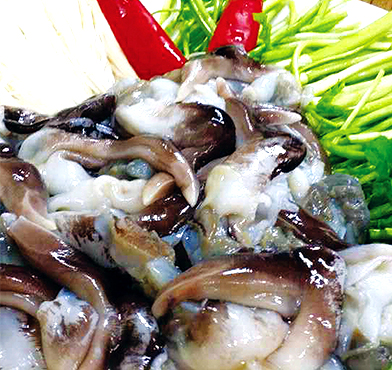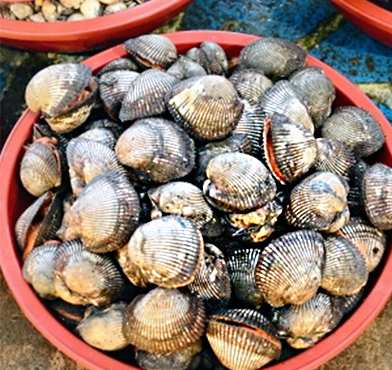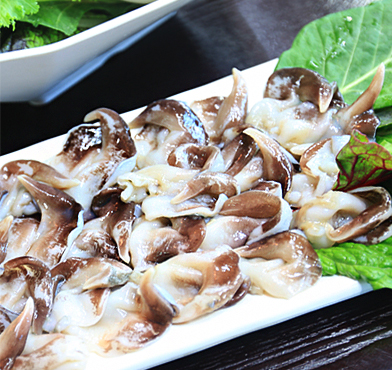
Sae-jogae that looks like the beak of a bird
Sae-jogae, called ‘emperor of clams’ as it contains various nutrients, is called so because its inner flesh looks like a beak of a bird
If you enjoy shabu-shabu with vegetable broth, made with mushrooms, green onion, pepper, and garlic, and sauce, then you will feel the scent of the seas entering deep into the body
Sae-jogae is a nutritional noble among clams!
As it has superb taste, during the Japanese Empire all of it was exported to Japan to be used for ingredients for sushi, so it was a rare food ingredient in Korea. It is caught in Yeosu Gamakman area from January to March, lays eggs in fall, and fatty by winter. As it is rarely caught throughout Korea, except Yeosu Dolsan Euppyeongsa and Doshil seas, although there are many who seek for it for its superb taste, it always is expensive. Sae-jogae of Gamakman is 2-3 times thicker than the sae-jogae from other regions, and is rich in various nutrients such as proteins, essential amino acids, and iron. As sae-jogae are impossible to farm, they are provided 100% naturally. Sae-jogae, called the noble of clams, is eaten together with cool meat broth and various fresh vegetables (shepherd’s purse, spinach, water parsley, etc.) after it have been well cleaned. Sae-jogae is a rare food that can only be tasted between January to March. If you boil kalguksu or ramyeon in the broth after you eat shabu-shabu, it becomes a noodle dish that is full of the delicious taste of clams.




